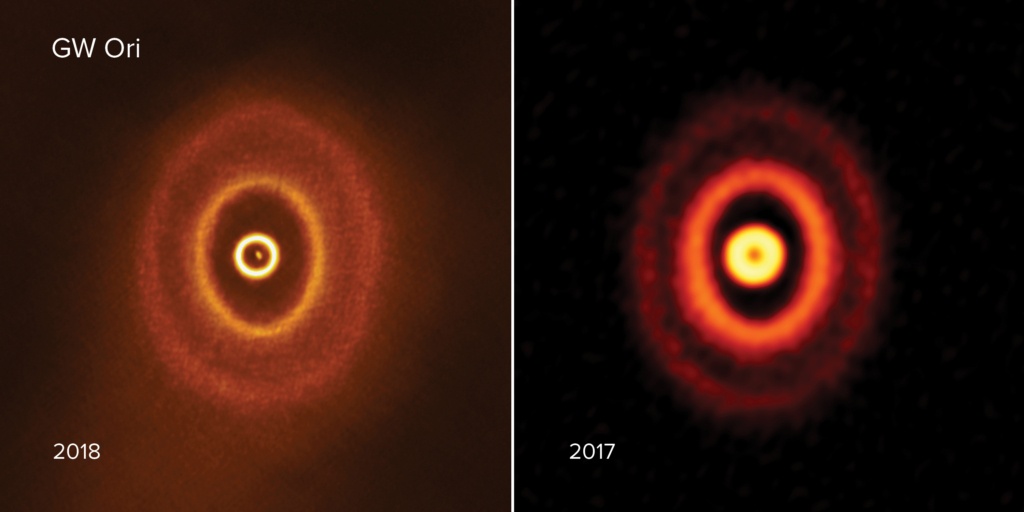Whatever we grow up with, we think of as normal. Our single solitary yellow star seems normal to us, with planets orbiting on the same, aligned ecliptic. But most stars aren’t alone; most are in binary relationships. And some are in triple-star systems.
And the planet-forming disks around those three-star systems can exhibit some misshapen orbits.
Two teams of astronomers using the Atacama Large Millimeter/sub-millimeter Array (ALMA) have looked into a young solar system called GW Orionis (GW Ori) that contains three stars. They’ve found that the orbits of the young, still-forming planets in this system are strange and misshapen. Their orbits are much different than the planets in our own Solar System.
The first study presenting these findings is titled “GW Ori: Interactions between a Triple-star System and Its Circumtriple Disk in Action.” It’s published in The Astrophysical Journal Letters and the lead author is Jiaqing Bi of the University of Victoria in Canada.
The second study is titled “A triple-star system with a misaligned and warped circumstellar disk shaped by disk tearing.” The lead author is Stefan Kraus from the University of Exeter in the UK. It’s published in the journal Science.
GW Orionis is a triple star system about 1310 light years away. All three stars in the system are T-Tauri stars, less than 10 million years old, which is very young for stars. As such, the planets in the system are still forming inside a thick ring of dust. ALMA has the capability to peer inside all that dust and watch as the system takes shape.
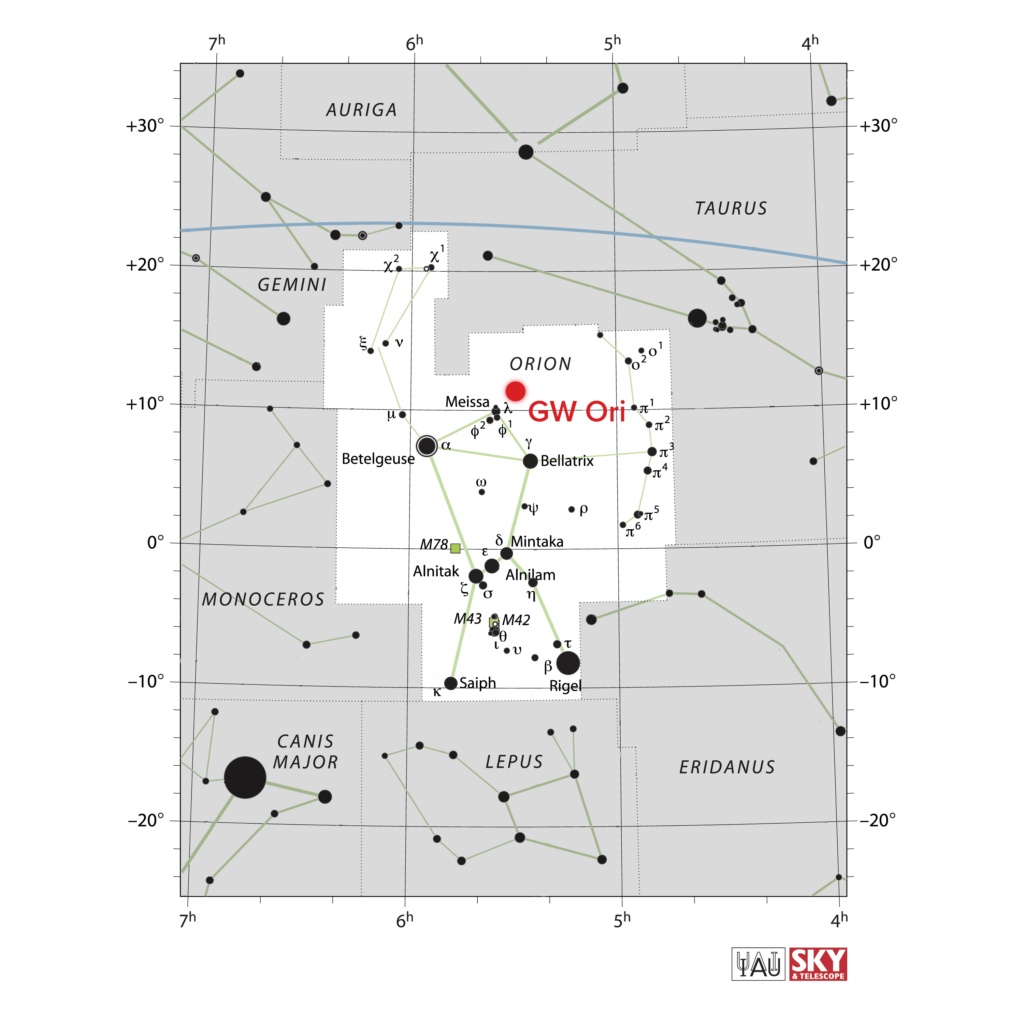
Credit: NRAO/AUI/NSF, IAU, Sky & Telescope
Inside the GW Ori system, the orbits of the planets aren’t aligned with the orbits of the stars. These crooked orbits begin in the protoplanetary disks that spawn the planets. By studying these crooked disks around multiple star systems, scientists hope to learn more about the planet-forming process.
GW Ori is a complex system, with two inner stars and one outer star. The two inner stars, named GW Ori A and GW Ori B, orbit each other at a distance of about 1 astronomical unit. The outer star, GW Ori C, orbits the two inner stars at a distance of about 8 au.
ALMA observations showed three separate rings in GW Ori’s massive planet forming disk. Each of the three has a different orientiation. They’re approximately 46, 185, and 340 au from center. The inner ring is misaligned relative to the other two, and to the stars themselves. The outer ring is noteworth because it’s the furthest ever observed from its star at 340 au. In our Solar System, outer planet Neptune is only about 30 au from the Sun. The disks also contain a lot of dust. Bi’s teams says that the disks have estimated dust masses of 74, 168, and 245 Earth masses, respectively.
ALMA first spotted the misshapen orbit in GW Ori back in 2017. Follow-up observations confirmed the twisted orbit. “We were surprised to see the strong misalignment of the inner ring,” said Jiaqing Bi in a press release. “But the strange warp in the disk is confirmed by a twisted pattern that ALMA measured in the gas of the disk.”
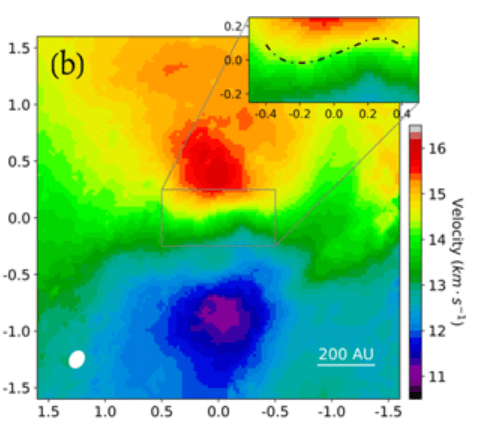
The second research team, led by Stefan Kraus at the University of Exeter, used ALMA and the ESO’s Very Large Telescope (VLT) to observe the GW Ori system. They say the shadow cast by the inner ring onto the outer disk. They also found warm gas at the inner edge of the oddly-shaped ring.
“In our images, we see the shadow of the inner ring on the outer disk. At the same time, ALMA allowed us to measure the precise shape of the ring that casts the shadow. Combining this information allows us to derive the 3-dimensional orientation of the misaligned ring and of the warped disk surface,” said Kraus in the same press release.
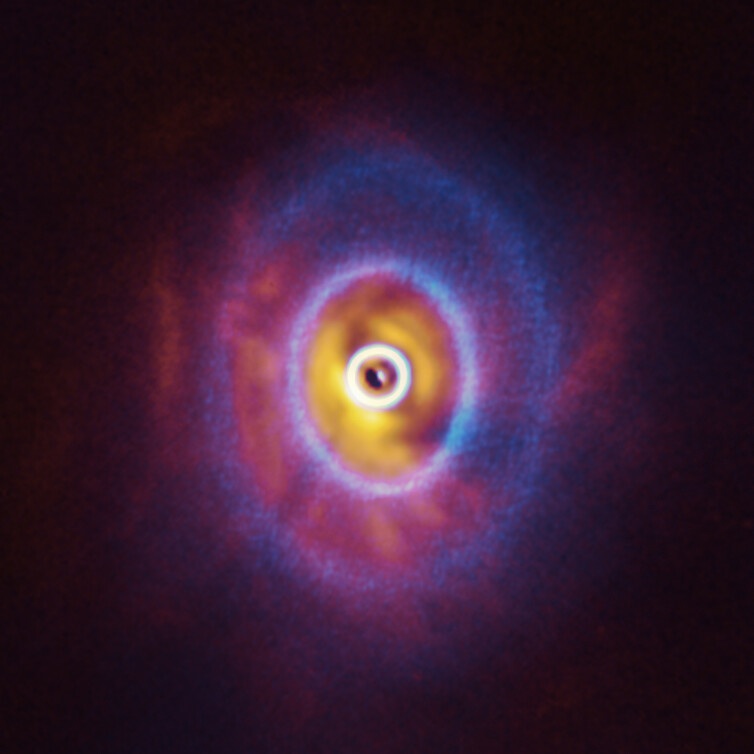
The three stars and their orbits play a critical role in shaping the planets’ orbits. Astronomers have been observing them in different wavelengths for 11 years. That covers a complete orbital period.
That 11 years of observational data showed that the stars are not aligned with each other, and are not aligned with the disk either. In their paper, Bi’s team explains that “The A–B binary and the C component can be dynamically viewed as an AB–C binary. The eccentricity of the circumbinary disk may increase through resonant interactions with the binary.” In the Kraus team paper, the authors write that “The orbits of the inner pair (A-B) and the tertiary (AB-C) are tilted 13.9 ± 1.1 degrees from each other”
“This proved crucial to understand how the stars shape the disk,” said team member John Monnier of the University of Michigan.
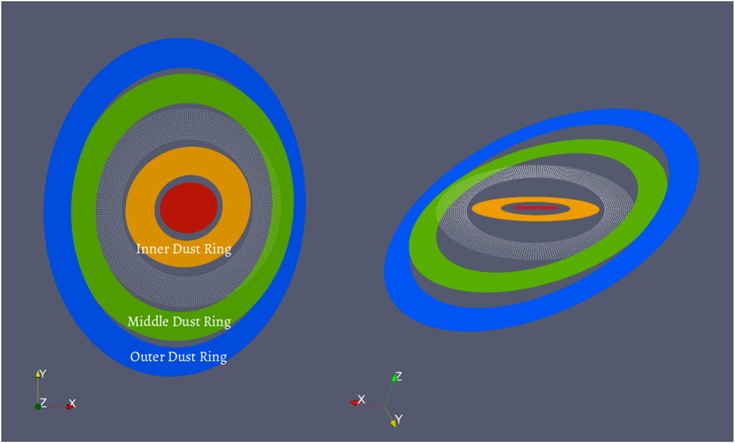
Both research teams then turned to computer simulations for a detailed investigation of the system, and what exactly is causing these misshapen orbits.
Each team came up with its own results.
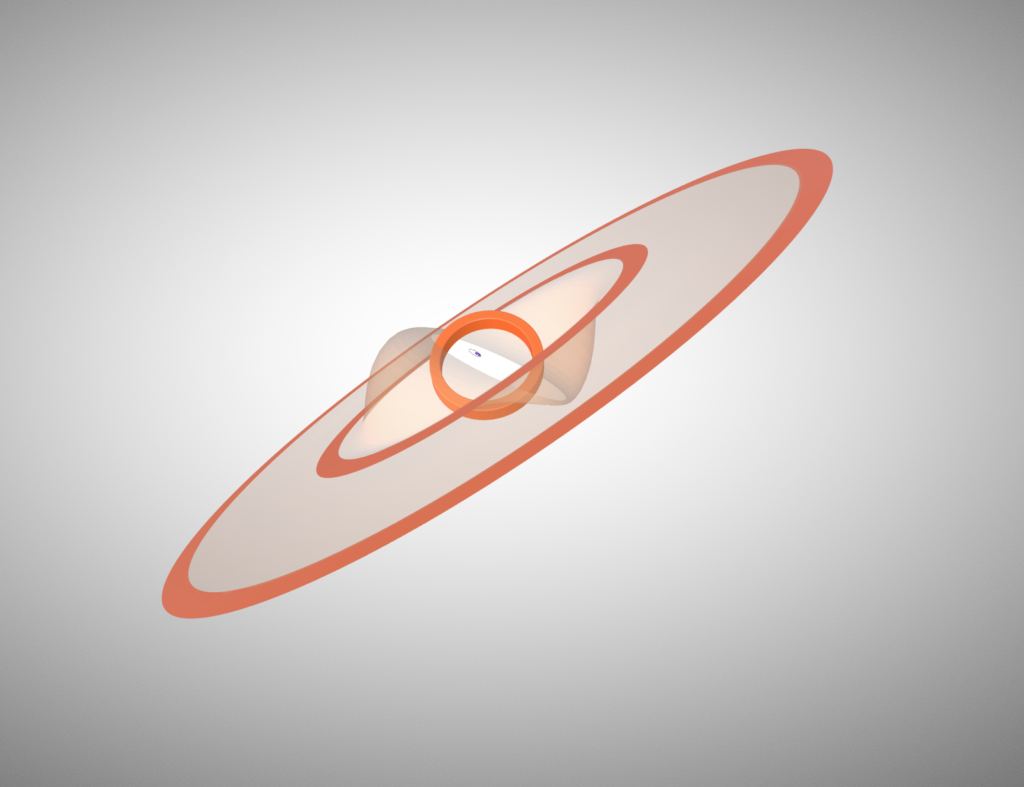
Credit: Kraus et al., 2020; NRAO/AUI/NSF
For Kraus and his team, the simulations showed that the “disk-tearing effect” is at play in GW Ori. It shows that the gravitational pull of the three stars orbiting in their different planes can warp and break the disks. As the three stars move through their misaligned orbits, the tidal torquing breaks the circumstellar disk into three distinct, precessing rings. “Our results show that disk tearing occurs in young multiple star systems and that it is a viable mechanism to produce warped disks and misaligned disk rings that can precess around the inner binary,” they write in their paper.
Kraus and his colleagues also say that the disk tearing effect can spur planetary formation. “By transporting material out of the disk plane, the disk tearing effect could provide a mechanism for forming planets on oblique or retrograde orbits (orbiting in the opposite direction
to the orbital axis and/or rotation axes of the stars),” they write.
But Jiaquing Bi’s team came to a different conclusion: the presence of an unseen planet.
“We think that the presence of a planet between these rings is needed to explain why the disk was torn apart.”
Team Member Nienke van der Marel of the University of Victoria.
Bi’s team says that the inner, middle, and outer rings are likely misaligned by ~11, 35, and 40 degrees to the orbital plane of the GW Ori AB-C binary system, respectively. Their simulations showed that the gravity from the stars is not enough to explain the misalignment between the inner and middle rings. “Our simulations show that the gravitational pull from the triple stars alone cannot explain the observed large misalignment. We think that the presence of a planet between these rings is needed to explain why the disk was torn apart,” said team member Nienke van der Marel of the University of Victoria. “This planet has likely carved a dust gap and broken the disk at the location of the current inner and outer rings,” she added.
Interestingly, Kraus and his team don’t rule out a planet as the cause. “The inner ring contains enough dust to build 30 Earths, which is sufficient for a planet to form in the ring.” In fact, each of the dust rings contains enough material for the cores of several giant planets.
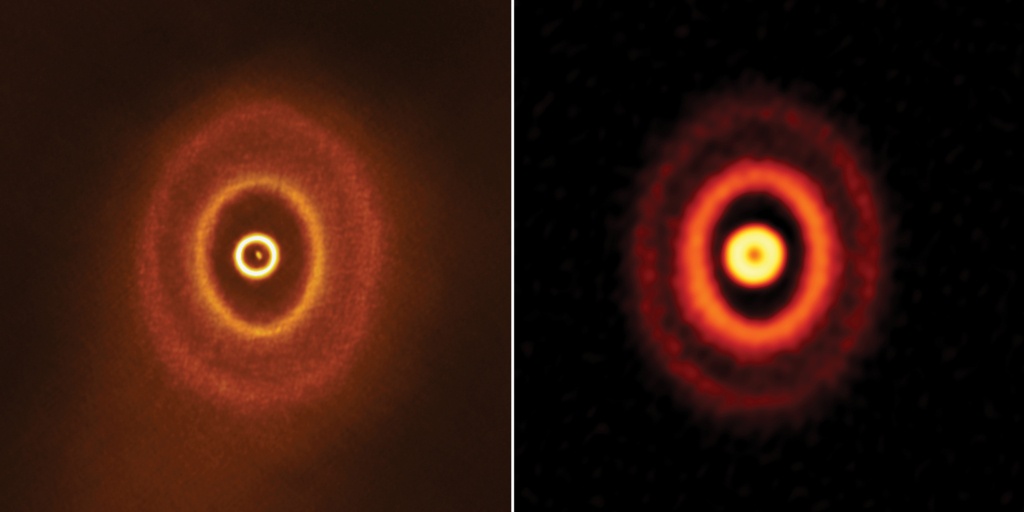
Credit: ALMA (ESO/NAOJ/NRAO), S. Kraus & J. Bi; NRAO/AUI/NSF, S. Dagnello
For now, there’s still uncertainty about the GW Ori system. One of the questions concerns unobserved companions in the disk.
“Dust rings and gaps have been shown to be common in protoplanetary disks, and one of the most exciting hypotheses is that they are produced by embedded companions ranging from stellar-mass all the way to super-Earths,” Bi and her colleagues write in their paper. “Specifically, a companion may be opening the gap between the inner and middle rings and breaking the disk there. Companions at hundreds of astronomical units from their host stars have been found before.”
If there is an unseen companion, it’s formation and migration processes are unclear. And if astronomers find one in the system, it’ll be another first. “If GW Ori’s dust rings are in the process of forming companions, there will be circumtriple companions, which have not been found before (excluding quadruple systems). The system will offer direct clues on the formation of distant companions,” writes Bi and colleagues.
More:
- Press Release: ALMA Discovers Misaligned Rings in Planet-Forming Disk Around Triple Stars
- Research: GW Ori: Interactions between a Triple-star System and Its Circumtriple Disk in Action
- Research: A triple-star system with a misaligned and warped circumstellar disk shaped by disk tearing
- Universe Today: More Pictures of Planet-Forming Disks Around Young Stars

